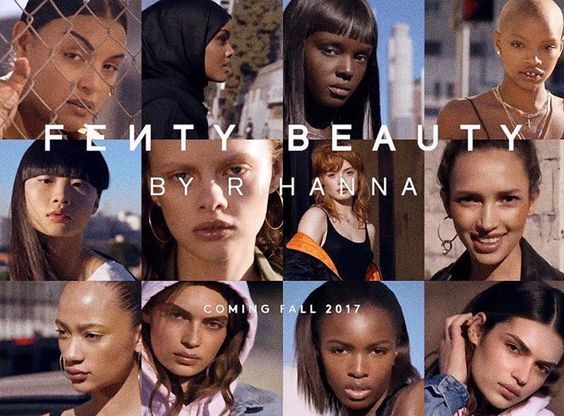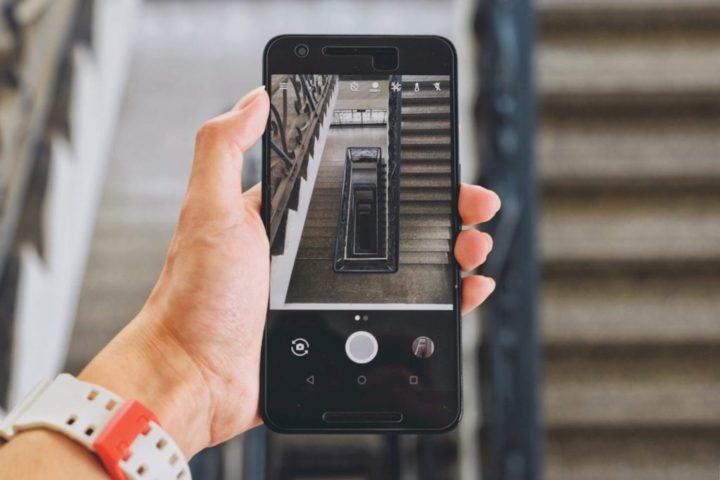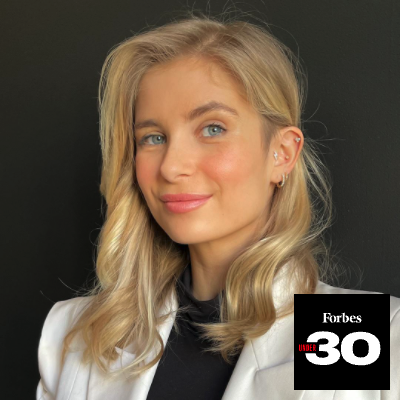Genuine diversity & inclusivity
Millennials and Gen Z, who make up the majority of beauty consumers, make purchase decisions based on whether their values align with those of the brands. This consideration is as powerful as price to this woke demographic. It’s not enough to just state those values though – the brand needs to live by them too, and in an authentic way. They need to get involved in the conversation and talk to communities in a meaningful way. Looking at this alone, it’s no wonder Fenty Beauty took off at a rate of knots.
“Fenty Beauty was created for everyone: For women of all shades, personalities, cultures and races. I wanted everyone to feel included.” -Rihanna
Every piece of Fenty’s marketing and communications centres around diversity and inclusivity. It’s clearly not just a PR exercises either – the fact they launched with 40 foundation shades showed the audience that Fenty puts their money where their mouth is from day dot.
Interestingly, Fenty weren’t the first to have such a diverse shade range. Shortly after the brand launched, Make Up For Ever posted on IG “40 shades is nothing new to us”. And it’s not new – there were (a few) existing brands that had that many shades available already. The key difference is that Fenty made diversity and inclusivity a core part of their strategy. Their values are clear and flow throughout every marketing decision – every campaign, social media post, comms piece – they are central to the brand in a way that hasn’t been seen before in the beauty world.
Here’s what Fenty’s first campaign looked like:

Their ethos hits the culture nail on the so precisely for their target audience – not only do most young people consider themselves global citizens now and see inclusivity as something that should be a given for any brand – but a black, female, bold, independent woman is at the helm of an empire. We want her to succeed. Rihanna is both inspirational and aspirational. She has built a community that people want to be a part of because she so strongly aligns with their values.
Once Fenty lifestyle launches, Rihanna will be the first black women to head up a major fashion house. She’s also the wealthiest female musician in the world. Work, work, work, work, work.
Celebrity (and social media) power
It’s easy to attribute Fenty’s early success to Rihanna’s 80 million+ IG followers, however there have been countless, short lived business ventures by influencers and celebrities who have huge fan bases. Whilst there’s no doubt an existing audience of that size is a huge leg up, it’s not enough to launch and maintain a brand at the level Rihanna has. Take Kylie Cosmetics – started with a bang, has made over a billion dollars but is now experiencing a steady decline in revenue. Why? There’s a distinct difference between Fenty and KC: Whilst Rihanna is closely linked to the Fenty brand, it does not revolve around her. There are stronger key messages that are communicated to the audience than just who founded it. Kylie Cosmetics almost solely relies on her fan base and social media to sell the product which isn’t necessarily sustainable in the long term. We’ve got no doubt her and Kris will be cooking up another venture in the meantime.
Not only did Fenty leverage Rihanna’s platform beautifully, they also engaged with the biggest beauty influencers around the globe with stunning press kits sent out prior to the launch. It was across every YouTube and IG feed for weeks – if you’d shown the slightly interest in make up previously, the pixel was dishing up Fenty content left, right and centre. There was so much hype around the brand before anything had even launched and they’ve managed to maintain that momentum because…
The products are actually good
It’s one thing to engage beauty influencers, it’s another to get raving reviews. Fenty’s launch was met with exactly that – everyone who tried the products seemed to love them. Another way that the brand lives by their values: they don’t just state that they have good products, they can back that up with reviews because it’s the truth. This kind of credibility and trust can’t be bought. Consumers see their favourite influencers review the Fenty range and on the next trip to Sephora (instead of thinking S.O.S someone help me there’s too many options) they make a beeline straight for the Cheeks Out Cream Blush.
Another way they show the audience how good their products are, without having to say it, is the way that some of their content is shot. You can see Rihanna using products in clips that are very much at-home-in-her-bathroom-with-crappy-lighting-vibes. She puts on quite a show, very entertaining. Fenty don’t always need highly produced, visually stunning content. They let the product speak for itself and you know if it looks impressive in that video, it’ll definitely look good when you’ve got some natural light going on.
Key takeaways:
- Define your values and tie them in with every marketing decision you make
- Gen Z & Millenials are all about community, whether it’s on or offline. Consider this is your marketing strategy. How can you connect with them in a meaningful and genuine way?
- Craft your key messages around facts rather than fluffy, vague statements. Consider whether a stranger would rate your product or service in the same way you talk about it. If you’re confident the answer’s yes, then you’re onto a winner





